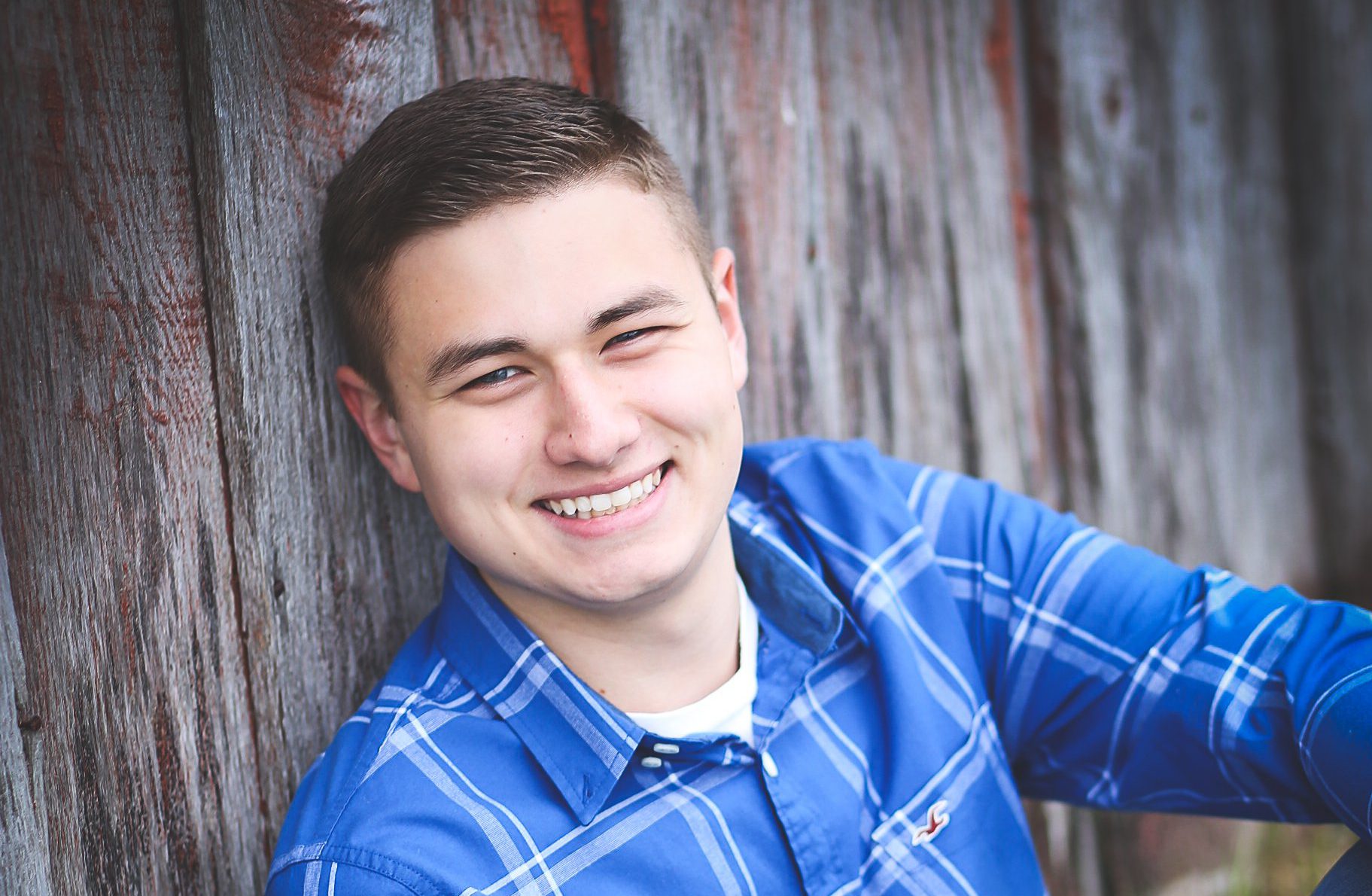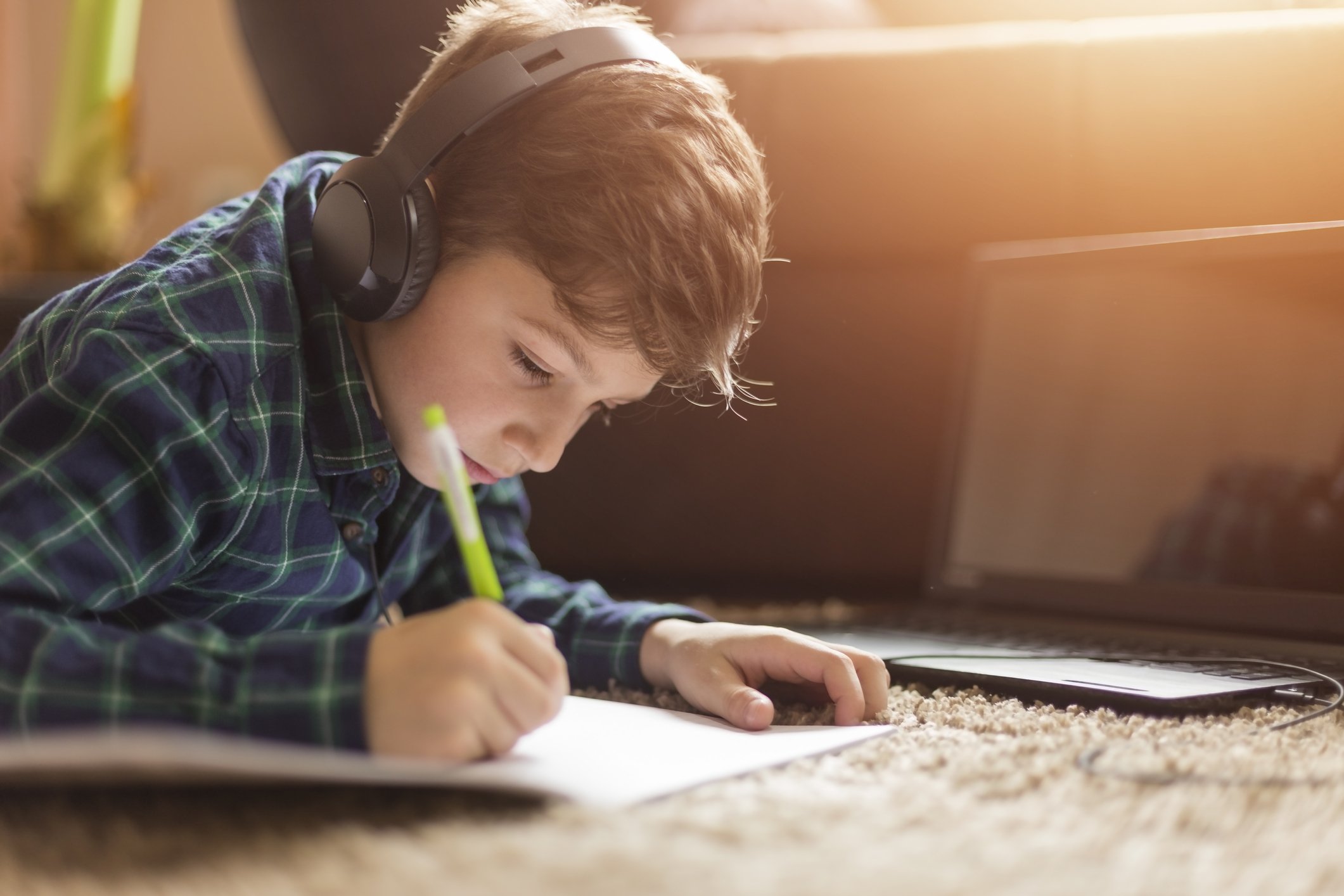
Evan Denney embodies the word “community."
Growing up in Jackson, Michigan, Evan remarked that becoming a teacher is not only his passion, but part of the family business. Evan’s father is the superintendent of Hanover-Horton Public Schools, and his mom is an administrator in an early childhood setting. To say Evan’s family is invested in the community is an understatement. I was blessed with the opportunity to virtually talk with Evan as he reflected on his unique experience as a student and as a “teacher” of sorts this past semester.
Right as the Midwest was beginning to brace for the impact of COVID-19, Evan’s father and sister attended a high school basketball game. Unfortunately, there was a mass exposure to the seemingly unknown virus at the site of this game. While Evan’s father and sister were unaffected, but self-quarantining, Evan and his mother developed many of the common symptoms of the virus. “[Our experience] wasn’t as bad as some people had it. It really felt like three different viruses over three weeks” Evan recalled, when I asked him what COVID-19 felt like for him. Evan’s father and sister took care of him and his mom as they struggled through their illnesses.
But Evan’s life didn’t stop just because he had COVID-19. He is a student in Concordia University’s School of Education, and his peers and professors were just beginning to transition to virtual learning. Fortunately, his professors were extremely accommodating and were willing to be flexible with assignments and deadlines. “It was hard for me not to get the work done right away,” Evan noted. Evan’s story would have been useful for professors and school teachers in and of itself, simply as a way to understand and empathize with students who are closely affected by COVID-19. However, Evan’s story became much more than that. Evan is going to be a teacher, and teachers are cut from a different cloth.
In order to satisfy the requirements for one of his courses, Evan needed to record himself teaching a few of his lesson plans for a history class, which is a pretty standard assignment for sophomores like Evan entering the field of secondary education. Evan had already been helping his sister with her history homework, so teaching a few lessons, equipped with his teacher training, was a logical next step. “Originally, I was supposed to teach five mini-lessons at a high school. I couldn’t make that happen.”
What Evan did make happen went above and beyond his professor’s learning objectives. Since his local district established that no new content could be taught, Evan used his time home with his sister to begin teaching her plus a group of her friends remotely. Altogether, they have a small classroom of nine students, which provides optimal learning time and interaction.
By the time we had talked, Evan already had a syllabus day with his students, where he outlined the expectations and was able to get to know them, plus a few more classes under his belt. The fact that he was teaching his sister’s friends meant that his students knew him already. However, the terms were different now, so Evan had to get to know his sister’s friends as students, now that he was their teacher. “Zoom instruction has been a little weird, but we’re all adjusting” he said. Teachers everywhere can understand that sentiment.

As a former teacher, I was eager to ask about the logistics right away. (It soon dawned on me that I was grilling Evan the way I would question a colleague about a new strategy they tried.) Evan has his students meet every Tuesday and Thursday at 2:00 p.m. As a group, they take time to work through a handout and discuss a PowerPoint presentation. Evan has been modeling note-taking during this time as well, since these students are preparing for high school.
When asked about assessment strategies, Evan immediately pointed out the engagement level of his students. Since he’s working with a small group, he’s able to dialogue with his students, which allows him to check for understanding informally. “A Trauma-Informed Approach to Teaching Through Coronavirus” invites teachers to consider placing an equal or higher priority on relationships compared to academics. Evan is experiencing the benefit to providing a space where students can come together: engagement. While this won’t be true in for all students, Evan is currently seeing positive student performance. Evan’s students are interested in the content and excited to see one another, so it’s not shocking that they’re learning the material efficiently.
Per the requirements of one of his education courses, Evan has been differentiating the students’ homework assignments. Individualizing the handouts allows him to challenge students where they’re at, while still working with the same content. Plus, with the classroom being virtual, students can’t see each other’s papers, so they’re able to maintain some privacy if that is something they value.
Evan has been using Kahoot trivia quizzes to check for understanding, and this has created a fun sense of competition and camaraderie. His students obviously love Kahoot, and he loves it because it serves two purposes: fostering connectedness and informally assessing. At the very end of class time, the students can play a random round of trivia, which has been really fun.
Classroom management looks different in some ways in the virtual classroom. Evan commented that he knows his students are extremely chatty, but he hasn’t had any issues with interrupting or excessive talking. (Naturally, students can’t turn toward each other and whisper when they’re on a Zoom call.) They follow basic virtual meeting protocol, such as muting microphones and unmuting when raising a question or comment. Evan set these expectations as well as others during his first virtual class, the aforementioned “Syllabus Day.”
Every assignment is optional. This whole thing is optional, but the students DO ALL OF THEIR HOMEWORK and they come back every time. Evan even said that because everything is optional and there are no time limits, the student work has been incredible. He thought back to an impactful class he had with the students about the imagery of the Civil War. One of his students was even grounded, but her parents allowed her to participate in Evan’s class.
Evan’s work with students from his local community is a testament to who teachers are at their core. Educators are well-versed in practicing discernment. Teacher friends, I invite you to lean in and listen to your future colleague, Evan. As Evan reflected on his own experience in establishing a makeshift classroom, I noticed that the following three points repeatedly surfaced:
- Students Miss Their Friends.
“I think this is why they’re all so engaged in the class. A lot of the girls in my class are really close with each other, and so are the boys. Not being able to see each other has impacted them enough, that they want to be here and want to learn” Evan stated.
2. What Teachers Should Know About Families Who’ve Had COVID-19.
Evan's story would have been useful for professors and school teachers in and of itself, simply as a way to understand and empathize with students who are closely affected by COVID-19. However, Evan's story became much more than that. Evan is going to be a teacher, and teachers are cut from a different cloth.
First of all, this is a pandemic, meaning that it involved a lot of forced changes. All humans will process these “forced changes” differently. Secondly, teachers should be mindful that COVID-19 may have impacted their students and/or their students’ families in a variety of ways. Teachers should consider learning about trauma-informed practices and how they can support students during and after this time. Evan commented, “School is important, but this [recovering from COVID-19] is also important. It’s pretty impossible to stay in the normal rhythm.” Evan and his mom each felt the physical effects of COVID-19 for about three weeks. Not everyone has the same experience, but when facing an illness, students should feel free to focus on recovering. This is just one way teachers can show honor to their students, and these practices can be demonstrated beyond the COVID-19 pandemic.
3. Work Smarter, Not Harder
This is easier said than done, but it has never been truer than during a global pandemic. Our energy is challenged by work responsibilities or the stress from lack of work, family needs and responsibilities, and the glaring reality of what’s going on worldwide. Teachers, remember that Evan said his students were showing up to class because they missed each other. Evan was able to meet this relational need and check for understanding through a round of Kahoot, which involves a simpler set-up process than writing a quiz. As I’ve written in other posts before, this is the time to cut the fat. Prioritize what your students need, assess how things are going, and pivot if necessary. Tighten up effective strategies that serve your unique students well. There are ways to foster a sense of connectedness while informally assessing student learning. A well-executed icebreaker helps students feel welcomed, while also helping them prepare themselves for learning.
“The kids take it day by day. Middle schoolers [often] bottle up their feelings” Evan noted, as he shared with me that his students have been processing life in quarantine a little at a time.
Evan’s devotion to his community after overcoming COVID-19 is laudable, but after talking with him, it seemed normal for Evan to find a way to serve. It struck me that that’s how teachers are wired. This is perfectly normal behavior for someone whose goals are oriented around bettering the next generation of learners.
As we reach the end of a really, really weird school year, don’t run out of steam. If you’re still preparing virtual lessons, take Evan’s notes: provide opportunities for students to connect, be cognizant of your students’ physical and emotional health when you plan, and only do the most important things. Teacher friends, thank you for continuing to do your job, even though you’re processing this all day-by-day along with your students. Keep your heads up, because each Zoom check-in, parent email, or last-day-of-school basket you drop off models servant leadership for tomorrow’s teachers.
— Vanessa Lane is the Content Marketing Lead at Concordia University and can be reached at vanessa.lane@cuaa.edu. When she's not at work, she can be found playing with her kids or watching NBA basketball with her husband.
If this story has inspired you, why not explore how you can help further Concordia's mission through giving.